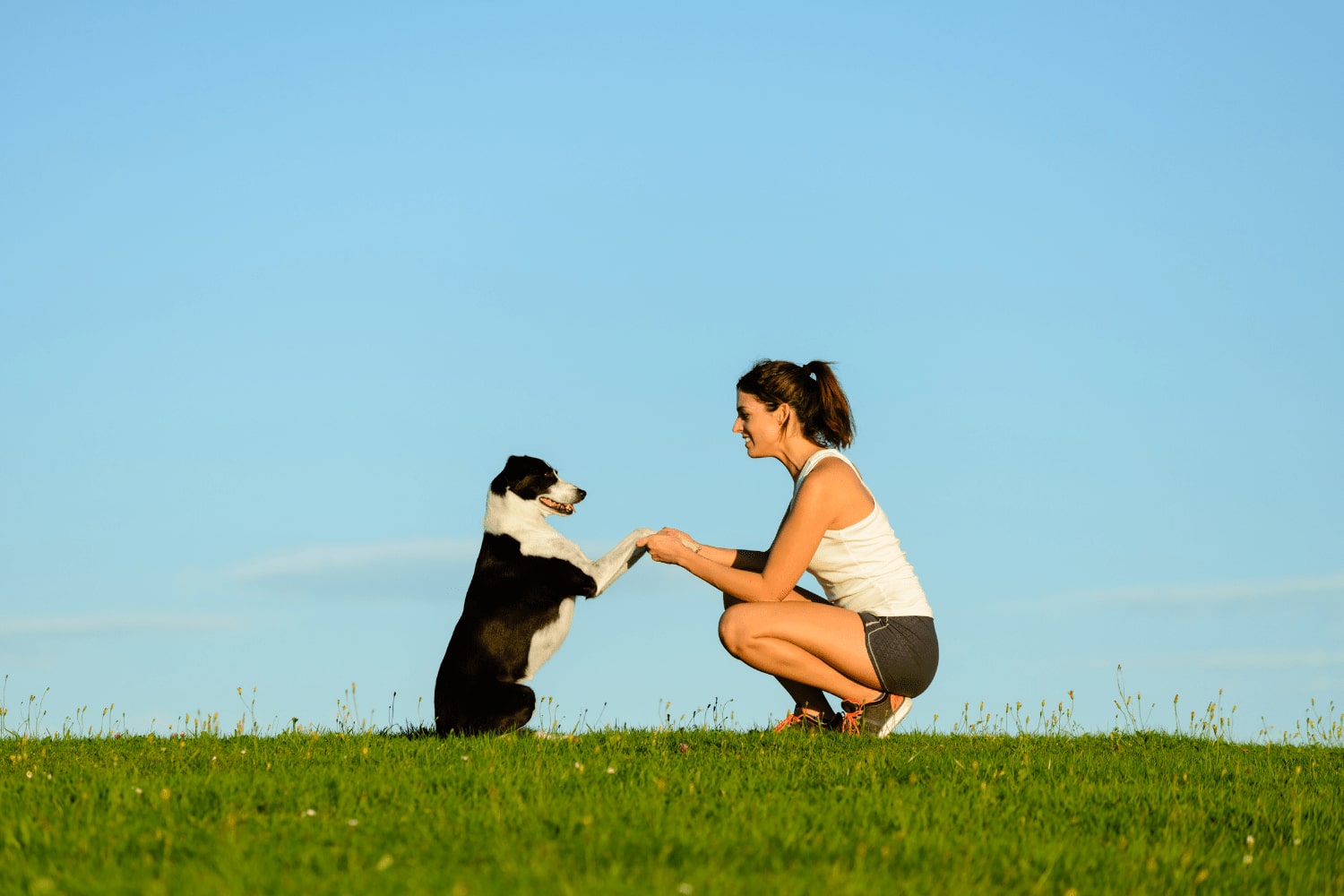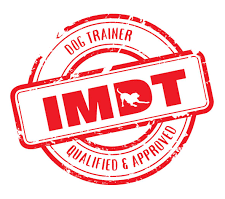Here at Royvon, we are huge advocates for using positive, reward-based methods for dog training. These methods have many benefits, the biggest one being that they build a relationship based on trust between the dog and their owner. This is in place of a relationship based on fear, where the dog only behaves because it worries about what its owner will do if it does not. These positive training methods do take more time and effort to get right, that is true. However, the results are usually far greater than they would be using other methods, and you and your dog will have a solid and lasting relationship, so what's not to love?
The key to these training methods is positive reinforcement. This can take various forms, depending on each individual dog and what motivates them. In today's post, we'll be talking about positive reinforcement in dog training, the different types, how you can use it, and more! So, if you're looking for the best methods to train your dog, or you're simply researching ahead of welcoming a new dog into your life, this article is for you! We honestly can't stress enough the benefits of positive reinforcement and how it can aid your dog training, so this is one training element that you don't want to miss out on. Working with your dog to find out what motivates them is a journey, but it's very worthwhile and will definitely pay off once you find what works for you.
What is positive reinforcement in dog training?
When it comes to positive reinforcement, dogs and humans are actually quite similar. As a person, we are far more likely to want to do something if there is some form of positive reinforcement involved. For example, at work, your company may introduce a monetary bonus for hitting certain targets. This gives you, as an employee, the motivation to get the task done! For dogs, it's similar. The basis of dog training is teaching your dog which behaviours you want them to exhibit, and which ones you want them to avoid. In order to get them motivated to display good behaviours, you need to give them positive reinforcement, so that they actually want to do it. This sounds simple, right? Well, that's because, in truth, it is quite simple! However, for some owners, the difficulty comes from finding the right reinforcement for their dog, and ensuring that they are not accidentally reinforcing negative behaviours.
What types of positive reinforcement is there?

Food is a big motivator for many dogs
When it comes to positive reinforcement in dog training, there are three main types. These are food, toys, and activities. Food is probably the most common one, as all dogs need to eat. So, they are likely to be highly motivated by food. This is why strategically using their daily feed is so successful as a training method. However, many dogs are also motivated by certain toys (eg a chew toy, or playing tug with a bit of rope), or activities (such as running, playing with other dogs, or going on a walk).
It's important to bear in mind that a dog's preferred reinforcer will change depending on the situation. For example, before breakfast, their main motivator is likely to be food. But, if it's a hot day and you're out and about, it might be a drink of water. As the dog's owner, you need to watch out for what seems to motivate them the best, and use this to your best advantage by giving it out as a reward for displaying a positive behaviour.
The number one aim of using a dog's love of these different things, is to transfer the love they have for them into a love for displaying the positive behaviour you want to train. For example, it could be transferring a love of food into a love for staying calmly in their bed while the family eats dinner. Over time, if you train the dog to sit calmly through the use of food, they will come to have positive associations with their bed, and will be more than happy to sit there with no fuss, even if you no longer give them a food reward for doing so.
What else do you need to be aware of when it comes to positive reinforcement in dog training?
Now, it goes without saying that every dog is an individual. As a result, they will be motivated by different things. For some dogs, they are naturally only really motivated by food. This is fine if you have a large breed of dog, as it takes a lot of food to fill them up. But for small breeds, you could quickly run into problems. What if they get full before your training session is done? They will then no longer be motivated by food. But if they're not motivated by toys or activities either, you may find that the training stops there for the day. So, it's a good idea to teach your food-motivated dog to enjoy a game such as tug with you, so that you can continue your training using this as a motivator. Instead of simply using food to motivate them into displaying the behaviours you want, you use the food to motivate them to play, so you can then use this as positive reinforcement in dog training instead of or in tandem with food.
Does your dog have any motivators that they shouldn't be getting?
Another thing to be aware of is any motivators that your dog is getting throughout the day that may not be positive when it comes to their training. For example, does your dog enjoy barking at delivery drivers? What about chewing your furniture? These are all negative behaviours that you don't want your dog to be doing, but they enjoy them, thus reinforcing that negative behaviour even more.
It's also important to be aware of reinforcing any negative behaviours that surround your dog's motivator. For example, if they are motivated by going for a run around the park, but they know that you have to go in the car to get there, they may start barking loudly in the car from excitement, or perhaps bounding out of the car and out of sight as soon as you get there. The problem is, these behaviours get reinforced by getting what they want- a run around at the park! You can prevent these behaviours from occurring in a number of ways, but it all comes down to positive reinforcement in dog training to make sure you're not reinforcing negative behaviours. For example, if they start barking in the car, drive somewhere else until they calm down, or use food to motivate them to sit quietly.
Building up a great relationship with your dog will help this greatly. If you have a good relationship, your dog will see you as the centre of their universe, and they will be more than happy to follow your commands. So, you can give them permission (or not) to exhibit a behaviour such as running around at the park, and they will actually listen to you. If you're struggling with using positive reinforcement in dog training, you may want to enlist the help of a professional dog trainer who will help you to build up a trusting relationship with your dog.
The topic of positive reinforcement is vast, and there's so much you can do to utilise it as much as possible! We can't possibly cover it all in just one blog post, but hopefully this has given you some insight into the basics, and how useful it can be as a training tool. The aim of any dog owner is to see their dog live a fulfilling and happy life, while also being well-rounded and nicely behaved. Using positive reinforcement in dog training is one way that you can help make this a reality, and turn any dog into the dog of your dreams!
If you're struggling with dog training, Royvon is here to help. We work with all breeds, from dogs who just need basic training, to helping them overcome more severe behavioural issues. To find out more about the different options we offer, both in person and virtually, please visit our website or get in touch with us today.
Enjoyed this post? Don't forget to subscribe to our YouTube channel to get all of our latest videos, packed full of training tips!






Leave A Comment